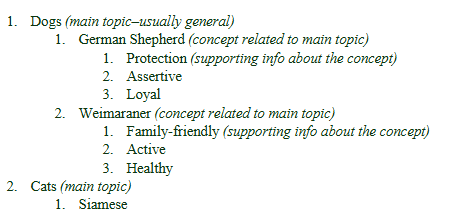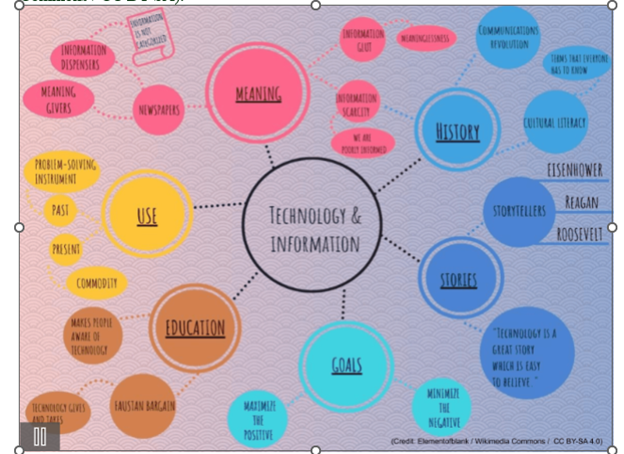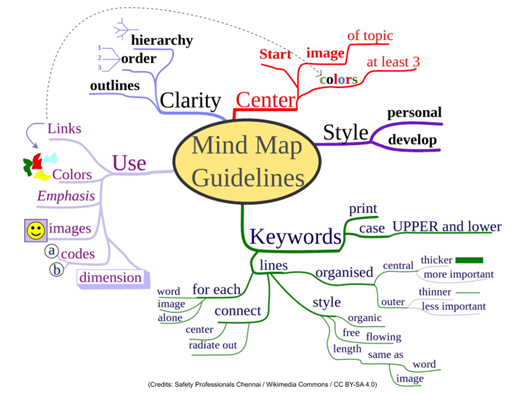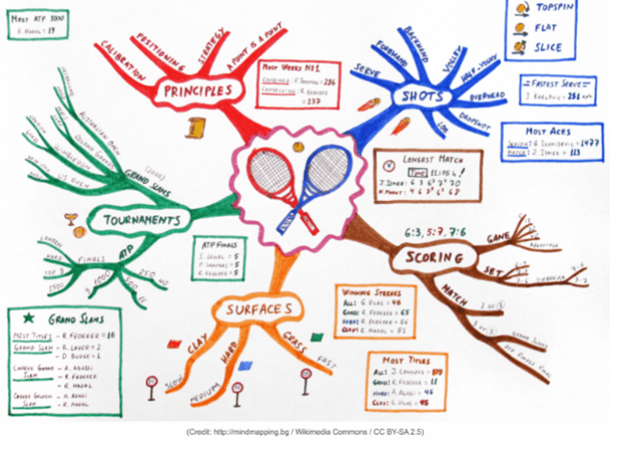Chapter 1.5 Notetaking Systems



Whichever notetaking system you choose – computer-based, pen & paper, sketched, note cards, text annotations, and so on – the best one is the one that you will use consistently and accomplishes its goal. The art of notetaking is not automatic for anyone; it takes practice. Unless your instructor expects a specific notetaking style in their class, you are free to use techniques from different systems to match your style.
Just keep yourself – and your notes – organized. At the very least, start notes with an identifier, including the date, course name, topic, and any other information you think will help you when you revisit the notes later. Consider leaving some blank space in your notes so you can add new ideas, questions, or clarifications to the original notes as your knowledge on the topic expands through additional readings, lectures, and explorations.
You may have a notetaking style you have used for all your classes. When you were in high school, this one-size-fits-all approach may have worked. Now that you’re in college, reading and studying more advanced topics, your old method may still work, but you should have some different strategies in place if you find that your previous method isn’t working. Sometimes different subjects need different notetaking strategies.
Cornell Method
One of the most recognizable notetaking systems is the Cornell Method, a method devised by Cornell University education professor Dr. Walter Pauk in the 1940s. In this system, you take a sheet of notebook paper and draw lines to divide the paper into four sections: a two-inch horizontal section at the top of the page, two inch section at the bottom of the page, and a vertical line in the center section two inches from the left edge, leaving the biggest area to the right of the vertical line. In the top section include information that provides context for the notes – topic, class, date, the overarching question the notes will answer, etc.
Watch this video “How to Use Cornell Notes”, from the Learning Strategies Center at Cornell for ideas on how to adapt Cornell Notes to different classes or note-taking purposes.
Figure 1.4. The Cornell Method provides a structured, organized approach that can be customized.
Use the largest section (middle-right of the page) to record the main points of the lecture or reading, preferably in your own words. Abbreviate or use symbols if they make sense to you and use bullet points or phrases instead of complete sentences. After the note-taking session, set the notes aside for a few hours. Then pull out your notes and re-read what you wrote, fill in any details you missed or need to clarify. Then in the narrow section in the center of the page, write key ideas from the adjacent column. In the left column add one- or two-word key ideas or clues that will help you recall the information later.
Once you are satisfied with the middle sections, summarize this page of notes in two or three sentences in the section at the bottom of the sheet. Before you move onto something else, cover the large notes column, and quiz yourself over the key ideas. Repeat this step often to reinforce your ability to make the connections between lectures, readings, and assignments.
Outlining
You can take notes in a formal outline if you prefer, using traditional outline numbering (Roman numerals, indented capital letters, and Arabic numerals) or a multi-level bulleted list. In both, each indent indicates the transition from a higher-level topic to the related concepts and then to the supporting information. Some people only need keywords to spark their memory, but others will need phrases or complete sentences, especially if the material is complex. The main benefit of an outline is how organized it is. However, it can be tricky if the lecture or presentation is moving quickly or covering many diverse topics – though it may work well when actively reading.
The following outline excerpt illustrates the basic idea:

Concept Mapping and Visual Notetaking
A visual notetaking method is called mapping, mind mapping, or concept mapping, although each of these names can have slightly different uses. Many variations can be found online, but the basic principles are that you are making connections between main ideas through graphic representation. Some can get elaborate with colors and shapes, but simple is certainly okay – remember, match your style and personal preference. No matter how much artistic flair is on the map, the general concept is for main ideas to be front-and-center with supporting concepts branching out.
Figure 1.5 – Mind mapping can be an effective, personal approach to organizing information. (Credits: Safety Professionals Chennai, Element of blank, & http://mindmapping.bg / Wikimedia Commons / CC BY-SA).



Feeling exceptionally artistic? Consider drawing representations of concepts instead of using only text or adding color for emphasis. According to educator Sherrill Knezel in her article “The Power of Visual Notetaking,” this strategy is effective because “when students use images and text in notetaking, it gives them two different ways to pull up the information, doubling their chances of recall.” Not artistic? Don’t worry; the images don’t need to be perfect, just lodged in your memory.
Attribution
Strengthening Reading and Comprehension by Audrey Cross and Katherine Sorenson is licensed under CC BY-NC 4.0
Reading and Notetaking Strategies by Forrest Lane and Heather F. Adair is licensed under a CC BY 4.0. Content on this page includes adapted material from: Reading and Notetaking: Summary and Reading and Notetaking: Rethinking by Amy Baldwin also licensed under a CC BY 4.0.
Media Attributions
- Woman Writing in Book 1 © Prophsee Journals
- Man Writing in Book © Fa Barboza
- Woman Writing in Book 2 © Tima Miroshnichenko
- Cornell Method © OpenStax is licensed under a CC BY (Attribution) license
- Outline example © OpenStax is licensed under a CC BY (Attribution) license
- Mind Mapping example 2 © Elementofblank is licensed under a CC BY-SA (Attribution ShareAlike) license
- Mind Mapping Example © Danny Stevens is licensed under a CC BY-SA (Attribution ShareAlike) license
- Mind Mapping example 3 is licensed under a CC BY-SA (Attribution ShareAlike) license

